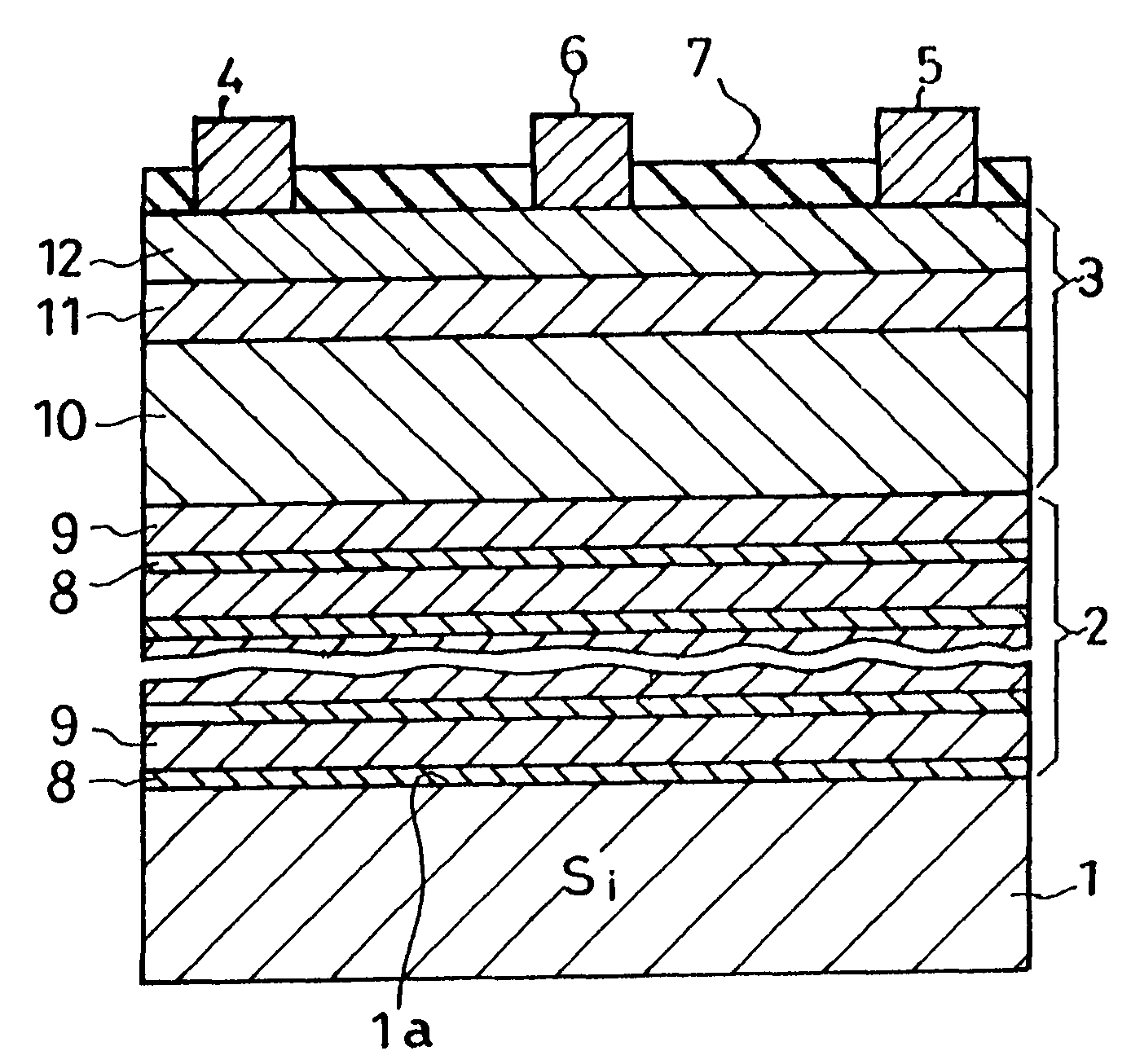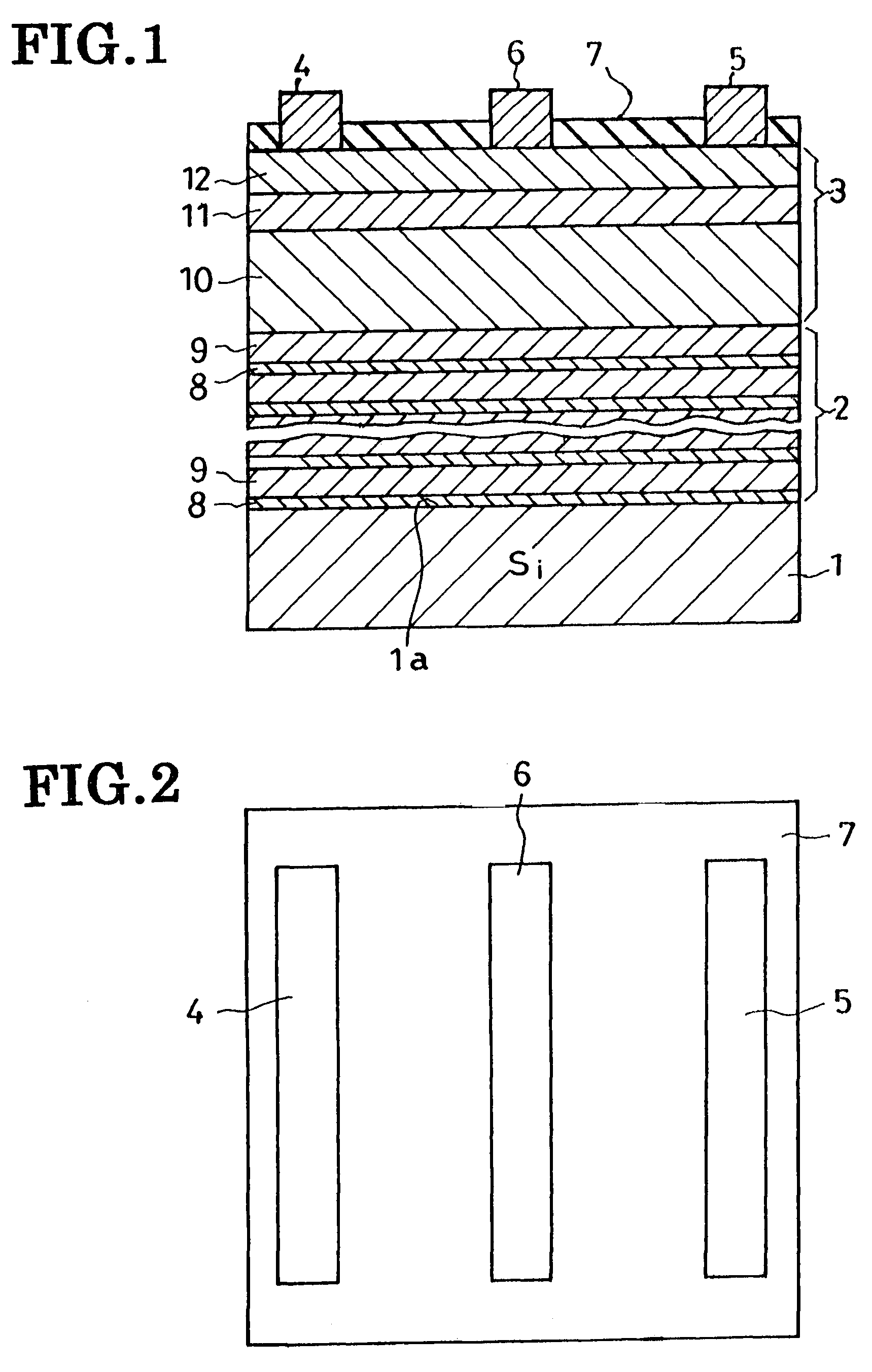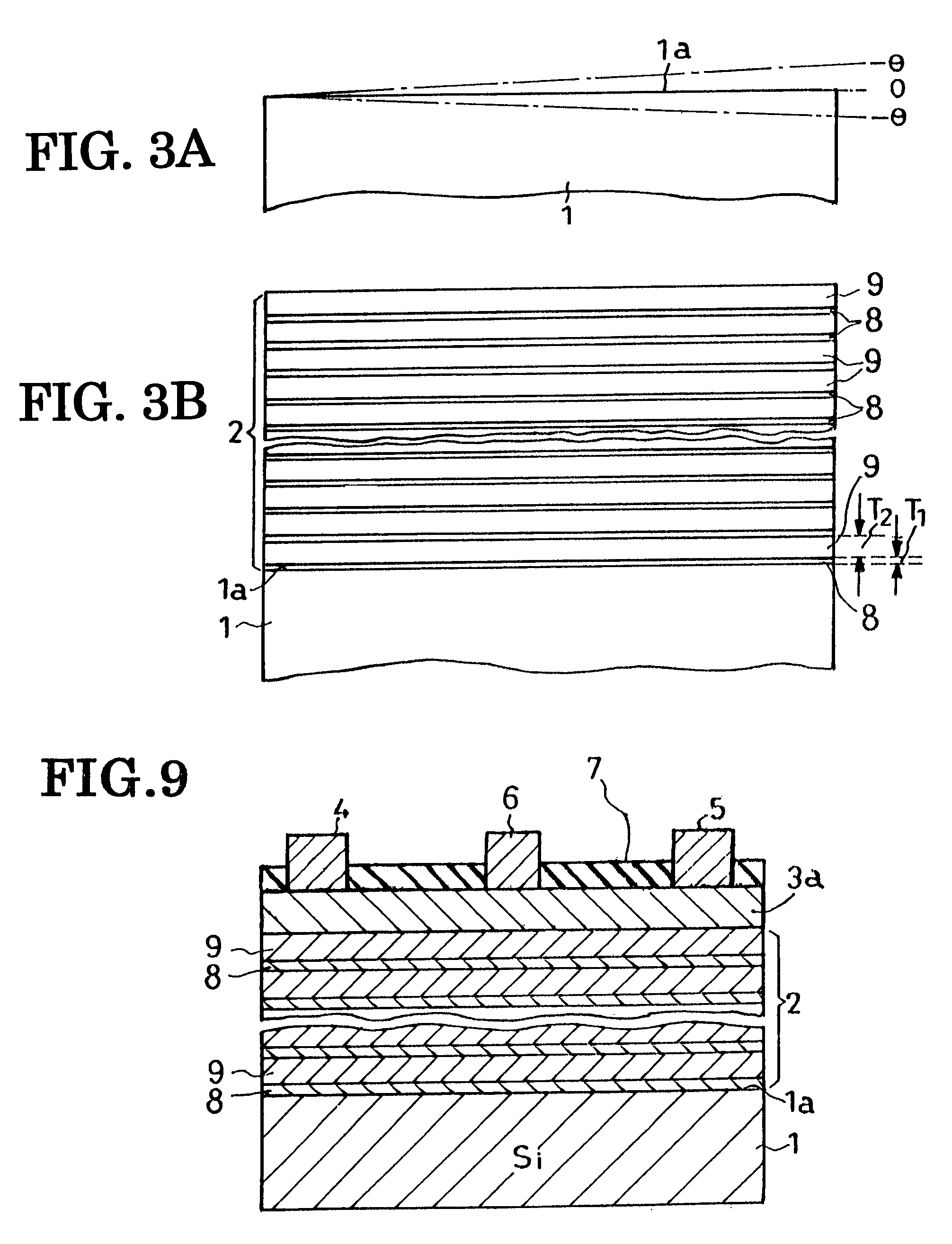Nitride-based semiconductor device with reduced leakage current
a technology of nitride-based semiconductors and leakage current, which is applied in the direction of semiconductor devices, electrical equipment, transistors, etc., can solve the problems of power loss or performance characteristics deterioration, the substrate is difficult to dicing for its hardness, and the apphire substrate has a weakness, so as to achieve the effect of reducing current leakag
- Summary
- Abstract
- Description
- Claims
- Application Information
AI Technical Summary
Benefits of technology
Problems solved by technology
Method used
Image
Examples
embodiment
of FIG. 5
[0074]The multilayered buffer region 2 of the FIG. 1 embodiment is modifiable as indicated in FIG. 5. Generally designated 2a, the modified multilayered buffer region differs from its FIG. 1 counterpart 2 in that a p-type impurity (e.g. magnesium) is introduced into the first buffer layers 8a. The second buffer layers 9 are of p-type like that of FIG. 1, being doped with a p-type impurity. Thus the modified buffer region 2a comprises a required number of alternations of p-type first layers 8a and p-type second layers 9. The compositions of these buffer layers 8a and 9, aside from the p-type impurity, are the same as those of the buffer layers 8 and 9 of the FIG. 1 embodiment. The HEMT incorporating the modified buffer region 2a is identical with that of FIG. 1 in all the other details of construction.
[0075]Although the entire buffer region 2a is of p-type in this alternate embodiment, the pn junction remains between this p-type buffer region and the n-like electron transit ...
PUM
| Property | Measurement | Unit |
|---|---|---|
| thick | aaaaa | aaaaa |
| thick | aaaaa | aaaaa |
| thickness | aaaaa | aaaaa |
Abstract
Description
Claims
Application Information
 Login to View More
Login to View More - R&D
- Intellectual Property
- Life Sciences
- Materials
- Tech Scout
- Unparalleled Data Quality
- Higher Quality Content
- 60% Fewer Hallucinations
Browse by: Latest US Patents, China's latest patents, Technical Efficacy Thesaurus, Application Domain, Technology Topic, Popular Technical Reports.
© 2025 PatSnap. All rights reserved.Legal|Privacy policy|Modern Slavery Act Transparency Statement|Sitemap|About US| Contact US: help@patsnap.com



